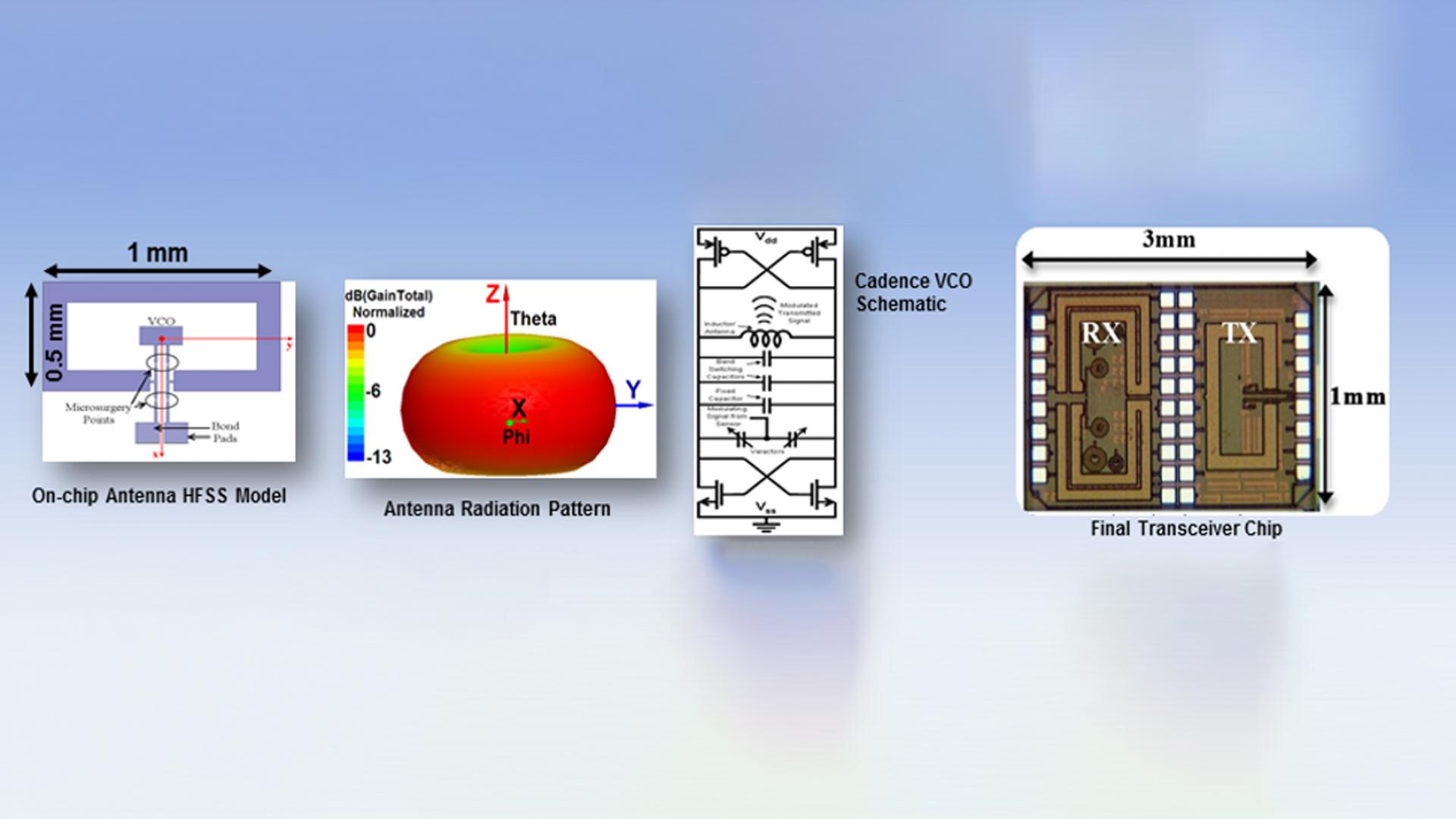Project Start Date
Project End Date
A miniature RF SoC is an ideal solution for many short-range wireless applications. Traditionally, sensors and antennas have been implemented off-the-chip requiring different integration and packaging methods to connect to circuits on-chip. However, this approach becomes excessively prohibitive at millimeter-wave frequencies such as 60 GHz due to transitions from one domain to another, resulting in degradation of system performance. Two projects are initiated targeting a complete SoC, however at different frequencies and for different applications.
The first project is a complete 5.2 GHz (UNII band) transceiver with separate transmitter (TX) and receiver (RX) on-chip antennas. Its size of 3 mm square is the smallest reported for a UNII band transceiver with two on-chip antennas. Both antennas are characterized for their radiation properties through an on-wafer custom measurement setup. A co-design strategy has been adapted to integrate antennas with circuits. On the transmit side the antenna also acts an inductor for the RF circuits thus doing double duty, whereas on the receive side, the antenna has been meandered to fit into the allocated chip space. The transceiver, with a very low power consumption, can successfully communicate the data to a receiver placed 2 m apart.

In the second project high data rate transmission is targeted by utilizing the unlicensed frequency spectrum at 60GHz in the WPAN realm. In order to achieve a true system-on-chip (SoC) solution, this project aims to integrate the data-generation and processing units (sensors, memory) as well as antennas on-the-chip along with the conventional RF circuit blocks. This approach is facilitated by the small antenna size required at 60GHz, however, overcoming low antenna gains due to lossy silicon substrate as well as co-design with RF circuits pose interesting research challenges.


